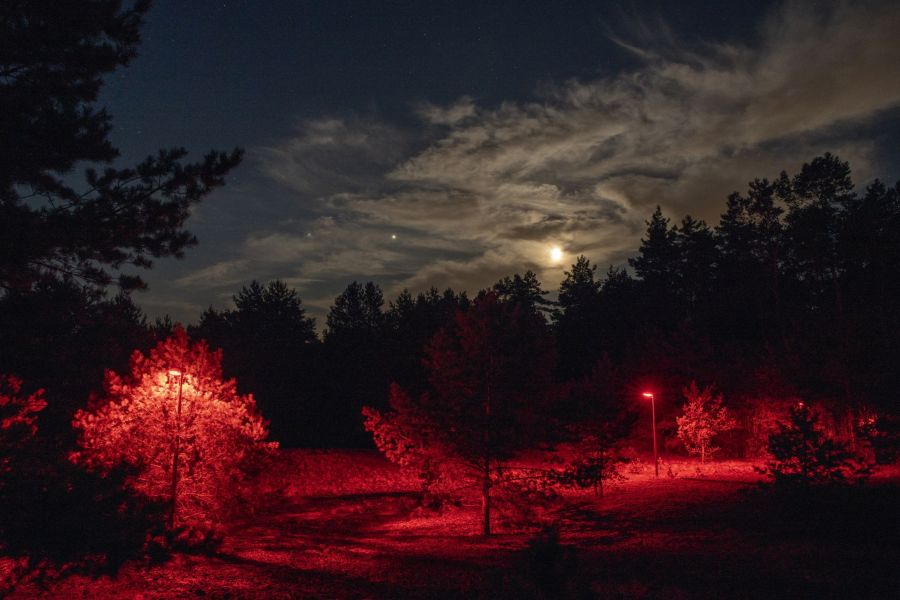Warmer and brighter: How we influence the foraging behavior of bats

Higher temperatures amplify the effects of anthropogenic light at night on bats. A recent publication by Sander Buddendorf, a researcher at the Netherlands Institute of Ecology (NIOO-KNAW) within the BioClock project, shows that common pipistrelle bats (Pipistrellus pipistrellus) are more strongly attracted to streetlights on warm nights — a behavior that disrupts their foraging patterns and thereby the ecological balance in a warming climate.
What was the study about?
Over a six-year period, Buddendorf and colleagues monitored the activity of common pipistrelle bats around streetlights. Pipistrelles often forage on insects accumulated around light sources. The researchers used a unique setup in which lampposts emitting white, green, and red light are experimentally placed in forest edges (as part of the “Light on Nature” project). The goal was to determine how ambient temperature influences the effect of light on bat activity.
What did they find?
- Pipistrelle bats were more active around light posts during warmer nights. In higher temperatures, more insects are attracted to, and bats are more active around lights.
- The effect was strongest at temperatures above 15°C.
- The effect was most pronounced under white light and absent under red light.

Why does this matter?
Bats play a crucial role in ecosystems and artificial light has a significant impact on their behavior. A key conclusion from this study is that the effect of light on bat activity is temperature-dependent — higher temperatures intensify the attraction. This finding is important as nighttime temperatures are rising due to climate change and urbanization.
Such amplified effects of light could cause stronger cascading effects in ecosystems and increase competition between common bats and less abundant bat species that often avoid light. Species less tolerant of artificial light may be pushed out of areas where common pipistrelles thrive instead.
What does this mean for policy?
According to Sander Buddendorf, the findings underscore the need to reduce artificial lighting in our environment — especially in warmer urban area.
“With global warming and increasing urbanization, it’s more important than ever to manage public lighting, to prevent further negative effects on urban wildlife,” he notes.
Did you know…
…that bat species in the Netherlands respond very different to light? Slow-flying species that fly close to water or vegetation tend to avoid light, while fast and agile species — like the common pipistrelle — are more light-opportunistic and often benefit from the accumulation of insects near streetlamps.
Read the full scientific article here: Temperature amplifies the effect of anthropogenic light on foraging common pipistrelle bats

The BioClock Consortium is funded by the NWA-ORC programme of the Dutch Research Council (NWO; project number 1292.19.077).